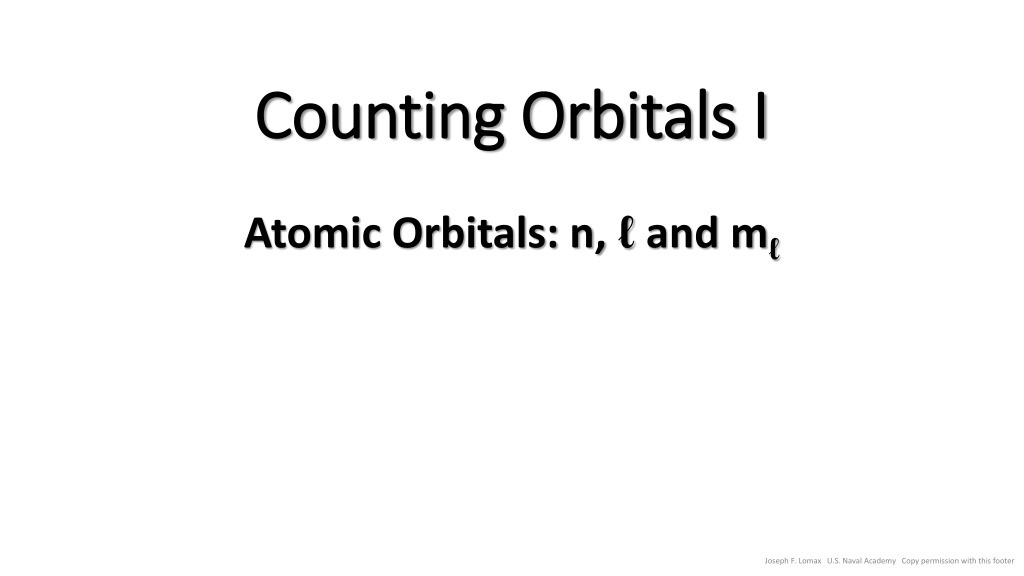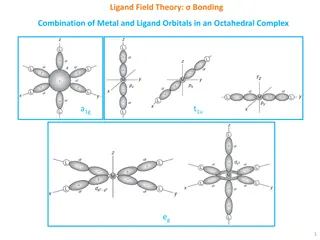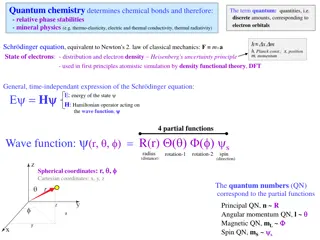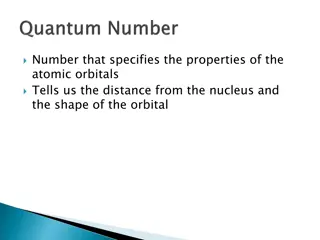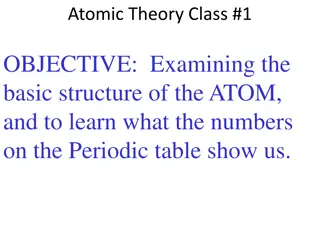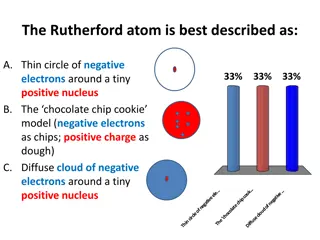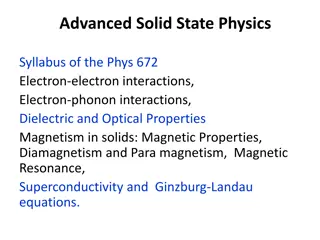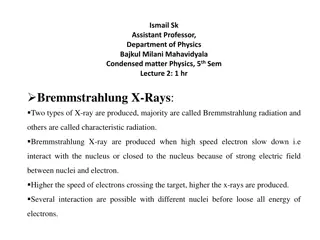Understanding Atomic Orbitals: Counting, Subshells, Energies, and Electrons
Learn about the basics of atomic orbitals, including the counting of orbitals in shells and subshells, the distribution of electrons in different energy levels, and the symmetrical nature of orbital labeling. Dive into the rules governing electron placement based on quantum mechanics and explore the arrangement of electrons in various orbitals within shells. Gain insights into electron energies in multi-electron systems and their distribution across different orbitals following the rules of the Periodic Table.
Download Presentation

Please find below an Image/Link to download the presentation.
The content on the website is provided AS IS for your information and personal use only. It may not be sold, licensed, or shared on other websites without obtaining consent from the author. Download presentation by click this link. If you encounter any issues during the download, it is possible that the publisher has removed the file from their server.
E N D
Presentation Transcript
Counting Orbitals I Counting Orbitals I Atomic Orbitals: n, and m Joseph F. Lomax U.S. Naval Academy Copy permission with this footer
Counting up Orbitals: In subshells Number of orbitals in a subshell Joseph F. Lomax U.S. Naval Academy Copy permission with this footer
Counting up Orbitals: in shells Number of orbitals in a subshell Number of orbitals in a shell Because it s a square Because it s a square Because it s a square Because it s a square Joseph F. Lomax U.S. Naval Academy Copy permission with this footer
Orbitals in shells: Stacking them up n = 4 n = 3 n = 2 In Hydrogen-like Orbitals All Orbitals in a shell are Degenerate, i.e. same energy n = 1 Joseph F. Lomax U.S. Naval Academy Copy permission with this footer
Labeling and m Identify m labels Label with number or letter 3 2 1 0 +3 +2 +1 0 -1 It is +2 +1 0 -1 -2 symmetrical. It is beautiful. +1 0 -1 0 -2 -3 This works because of the rules of waves. Electrons follow these. ( This is bowling. There are rules. John Goodman as Walter Sobchak in The Big Lebowski, 1998. Joseph F. Lomax U.S. Naval Academy Copy permission with this footer
Orbitals in shells: Many electron energies 6s 5d 4f 5p 5s 4d One electron with each spin: ms = +1/2 and ms = -1/2 for each orbital Average distance of electrons in same shell is the same. Energy increases (stability decreases) with increasing , i.e. s, p, d, f If all else fails follow the Periodic Table. 4p 4s 3d 1s 1s 2s 2s 3p 2p 2p 2p 2p 2p 2p 3s 3p 3p 3p 3p 3p 3p 3s 3s 4p 4p 4p 4p 4p 4p 4s 4s 5s 5s 3d 3d 3d 3d 3d 3d 3d 3d 3d 3d 4d 4d 4d 4d 4d 4d 4d 4d 4d 4d 2p 5p 5p 5p 5p 5p 5p 2s 6p 6p 6p 6s 6s 5d 5d 5d 5d 5d 5d 5d 5d 5d 5d 6s 6s 6s 1s 4f 4f 4f 4f 4f 4f 4f 4f 4f 4f 4f 4f 4f 4f 5f 5f 5f 5f 5f 5f 5f 5f 5f 5f 5f 5f 5f 5f Joseph F. Lomax U.S. Naval Academy Copy permission with this footer
